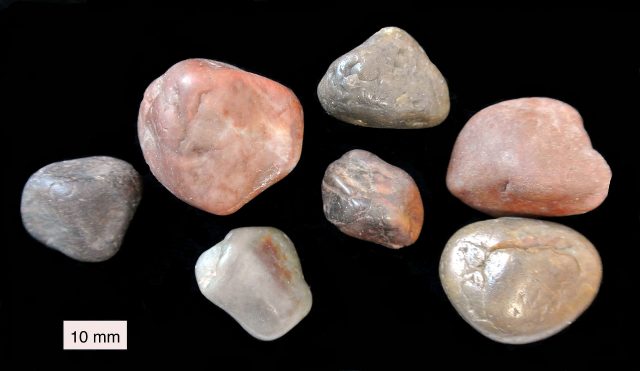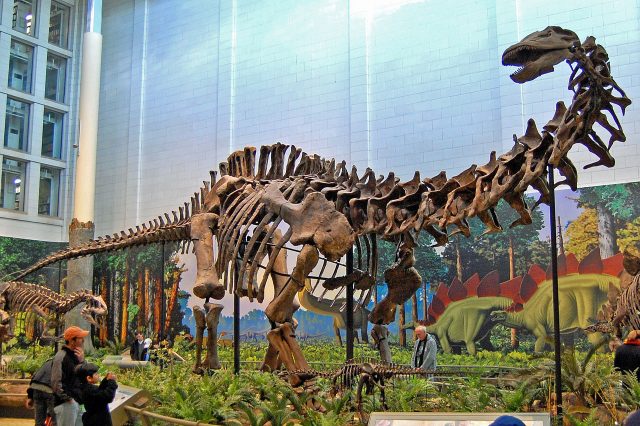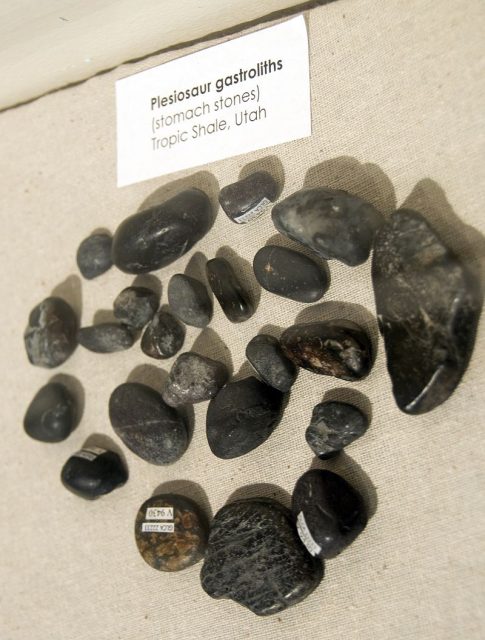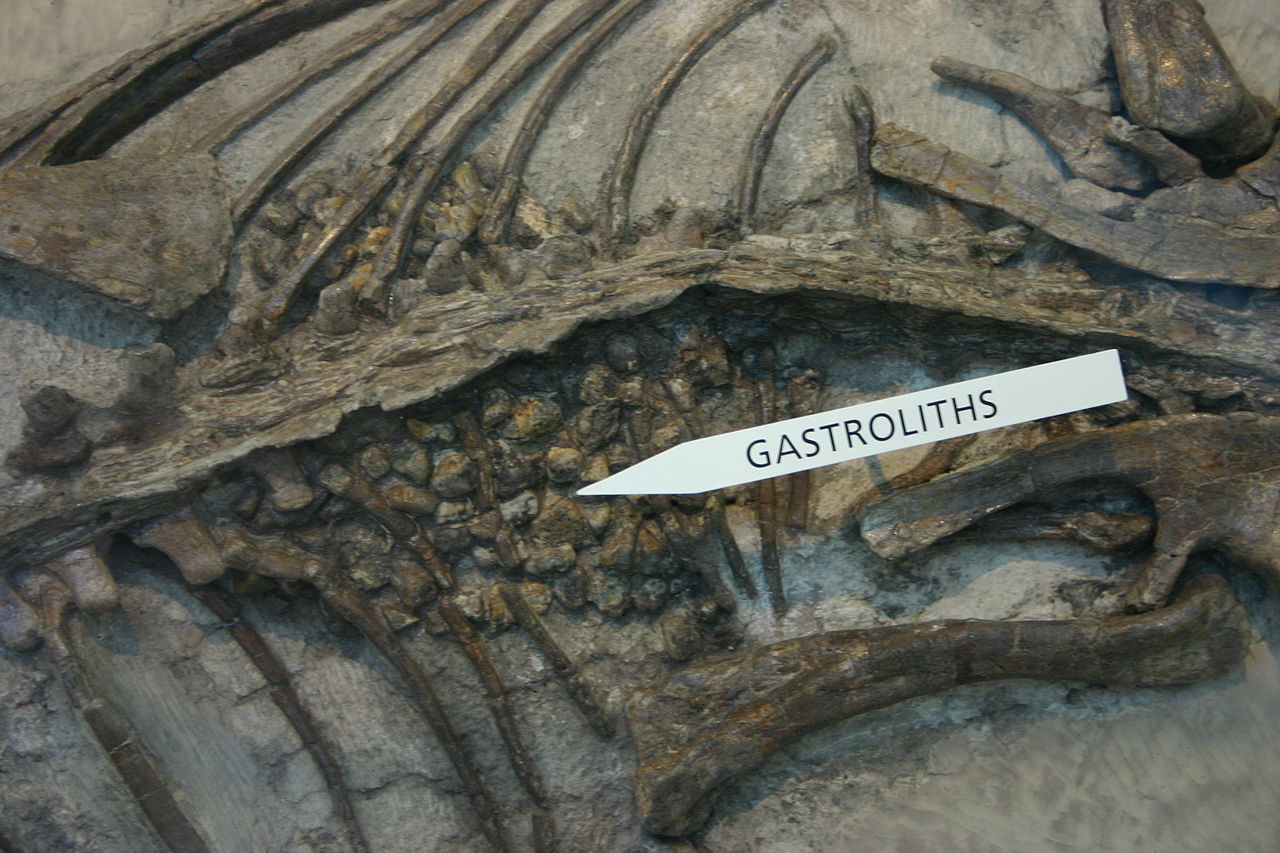Dinosaurs ate rocks? Those are the findings of a recent study, showing life in the Late Jurassic was truly hard to swallow.
Pink quartzite, or as Science Times reports “smooth, red quartzite cobbles”, were spotted when investigating Wyoming’s geology.
One rock is much like another, right? Wrong – in fact, the quartzite is so out of place it got lead researcher Josh Malone scratching his head. How did it get there?
The answer: Dinos, specifically long-necked ‘sauropods’ like Diplodocus, munched on stomach-clogging “gastroliths” during an epic quest for food. The study, published in the journal Terra Nova, proposes “the hypothesis of long‐distance dinosaur migration, perhaps following low energy, continental‐scale drainage systems”.
According to Malone and co, the legendary creatures followed a route believed to be a 600-odd mile journey from Wisconsin to Wyoming. Gastroliths could have been gulped down along the way.

Live Science notes the quartzite is seen naturally “in a handful of places throughout North America, including Idaho, Montana, New Mexico and Wisconsin.”
The Bighorn Basin is part of the Morrison Formation depositional basin in Wyoming. And it’s here Malone was inspired to investigate – thanks to his geologist father, and now colleague, David H. Malone.
It was supposed to be a trip to say hello. Instead it set Josh – from the Jackson School of Geosciences, University of Texas – on an extremely rocky path. His efforts have resulted in the first study of its kind centred on gastroliths and their role in dinosaur lifestyles.
Hundreds of the cobbles were ground down by the team, enabling them to analyze the zircons within. These handy minerals act a little like the rings of a tree. The Malones then pinpointed the age of the quartzite at an indigestion-inducing 1.8 billion years!
So, did dinosaurs consume gastroliths because there was nothing better to eat? They may be big but they certainly weren’t stupid. The possible explanation is more complex.
There are a few possible reasons. The Daily Mail writes gastroliths were eaten “to help aid digestion, provide minerals or, in some species, as ballast.”
However it happened, the connection between dino diet and quartzite conundrum is intriguing. Why are sauropods in the frame? This is due to the high numbers of skeletons in the area, compared to the likes of Allosaurus.
Ultimately the pink stuff isn’t accompanied by bones to verify the thinking. Yet a more vivid picture might explain that. The quartzite went in one end. Stands to reason it emerged from another, to be left behind as dinos moved on.

This latest study hasn’t been accepted by everyone. However the team have done a fair amount of cross referencing to try and narrow things down as much as possible.
An alternative view lies in the environment rather than a dinosaur’s digestive tract. Might the rocks in Wyoming be there through, say, a river system?
The researchers dispute this. Forbes writes that “at the time there weren’t any large rivers connecting Wisconsin to Wyoming”. While nothing can be ruled out in ancient history, the team argue it’s “unlikely that the quartzite rocks were deposited here by any geological forces”.
Gastroliths were first reported on in 1906, thanks to a discovery by George Reber Weiland. They’re also referred to as “gizzard stones”.

If a suspected stone looks like it’s had a good polish, then it may well have received a tumbler-like treatment inside the gut of a plesiosaur or Barosaurus.
The rocks not only serve as a menu for prehistoric diners. They potentially indicate factors such as travel. It’s possible what Malone has found is the longest known example of a dinosaur migration.
Sauropods are believed to have moved in hungry herds, needing to shift location in order to seek out more sustenance. Live Science consulted with Femke Holwerda of the Royal Tyrrell Museum of Paleontology, Alberta to report on their habits.
Another Article From Us: Beneath Florida Waters: Native American Site Protected as National Heritage
Would this have taken them all the way from Wisconsin to Wyoming? The jury’s out, with the truth being constipated. Sorry, contemplated…
